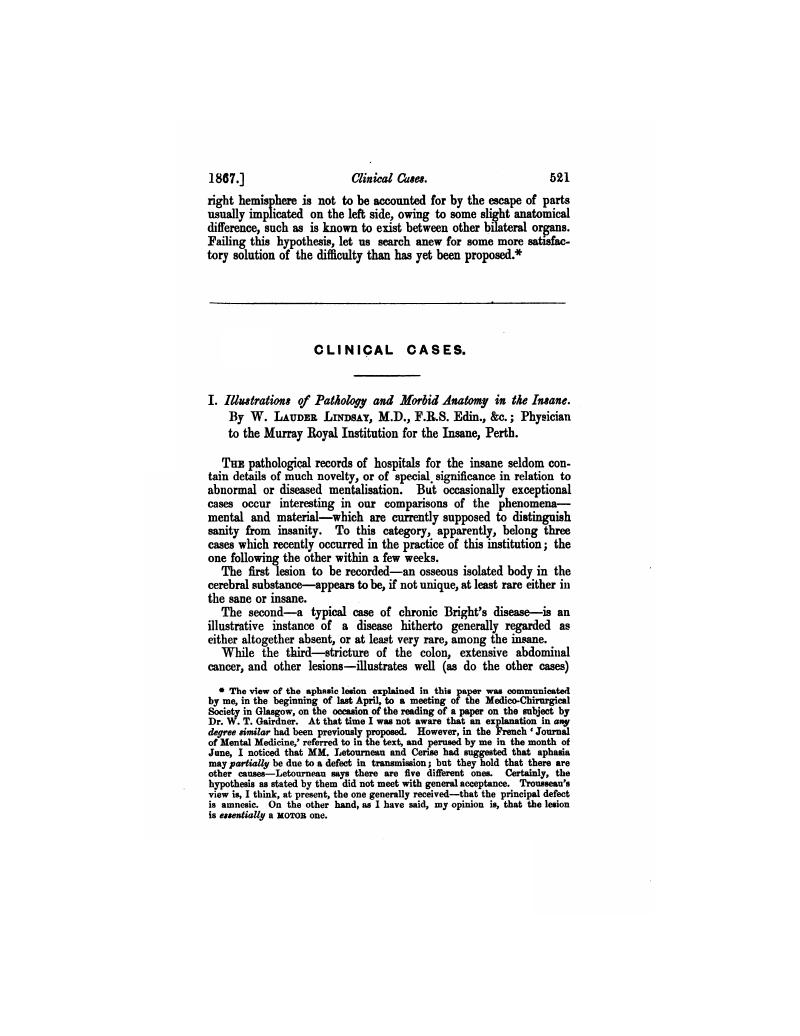No CrossRef data available.
Article contents
I. Illustrations of Pathology and Morbid Anatomy in the Insane
Published online by Cambridge University Press: 19 February 2018
Abstract
An abstract is not available for this content so a preview has been provided. Please use the Get access link above for information on how to access this content.

- Type
- Part I.—Original Articles
- Information
- Copyright
- Copyright © Royal College of Psychiatrists, 1867
References
Bibliographical References
In the Medical Reports of this Institution, I have more or less fully discussed the more interesting points raised by such cases as are herein-above recorded: so that it is unnecessary now to occupy space by recapitulation.Google Scholar
The reader will find general references to morbid anatomy, histology, and pathology in the insane, in the index to the ‘Medical Reports’ for the decennium from 1854 to 1864, p. 7.Google Scholar
The supposed specialty of structural lesions in insanity is discussed in the Report for 1858–9, p. 15.Google Scholar
The peculiarities of the symptomatology of organic diseases in the insane are referred to in the Reports for 1857–8, p. 13; and 1860–1, p. 36.Google Scholar
General illustrations of exceptional organic lesions in the insane are recorded in the Reports for 1856–7, 1857–8, 1859–60, and 1860–1.Google Scholar
Illustrations of the condition of the urine, especially in reference to Albuminuria and Brights disease, will be found in certain “Contributions to the Chemistry and Microscopy of the Urine in the Insane,” in the ‘Journal of Psychological Medicine,’ July, 1856, p. 488; and in the Report for 1860–1, pp. 36 and 40.Google Scholar
Illustrations of osseous metamorphosis of fibrinous exudates are given in the Report for 1859–60, pp. 19 and 21.Google Scholar
Instances of the atheromatous diathesis occur in Reports for 1859–60, p. 22, and for 1860–1, p. 35.Google Scholar
A case of cancer of liver with acute enteritis and peritonitis, fatal without the exhibition of pain, and so far parallel to Case III, above recorded, will be found in Report for 1857–8, pp. 10 and 14.Google Scholar





eLetters
No eLetters have been published for this article.